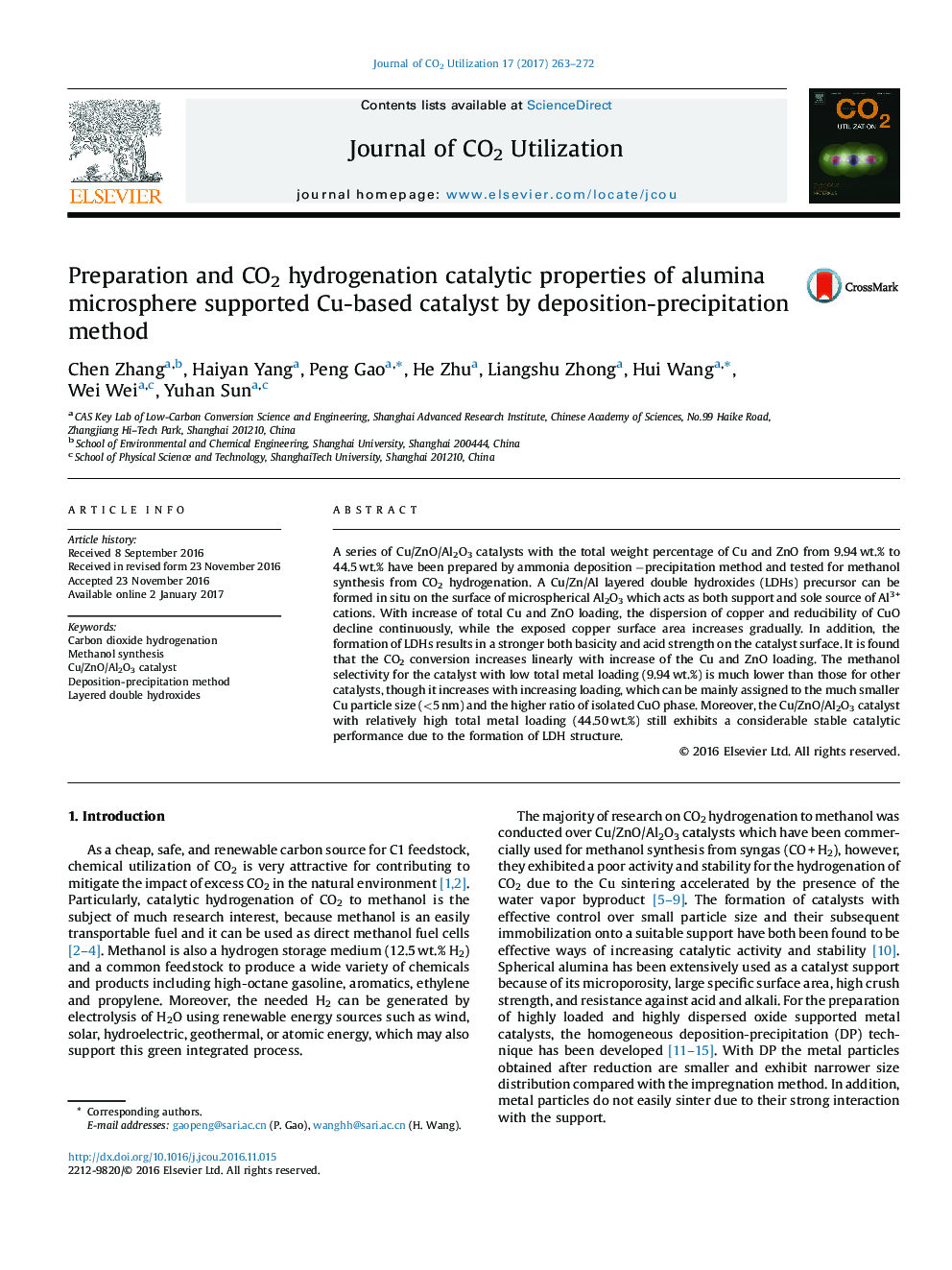| Article ID | Journal | Published Year | Pages | File Type |
|---|---|---|---|---|
| 6456337 | Journal of CO2 Utilization | 2017 | 10 Pages |
â¢Cu/ZnO/Al2O3 catalysts were prepared by ammonia deposition-precipitation method.â¢Microspherical Al2O3 acted as both support and sole source of Al3+ to form LDHs.â¢The CO2 conversion increased linearly with increase of total Cu and ZnO loading.â¢The catalyst with high metal loading still exhibited a much stable performance.
A series of Cu/ZnO/Al2O3 catalysts with the total weight percentage of Cu and ZnO from 9.94Â wt.% to 44.5Â wt.% have been prepared by ammonia deposition âprecipitation method and tested for methanol synthesis from CO2 hydrogenation. A Cu/Zn/Al layered double hydroxides (LDHs) precursor can be formed in situ on the surface of microspherical Al2O3 which acts as both support and sole source of Al3+ cations. With increase of total Cu and ZnO loading, the dispersion of copper and reducibility of CuO decline continuously, while the exposed copper surface area increases gradually. In addition, the formation of LDHs results in a stronger both basicity and acid strength on the catalyst surface. It is found that the CO2 conversion increases linearly with increase of the Cu and ZnO loading. The methanol selectivity for the catalyst with low total metal loading (9.94Â wt.%) is much lower than those for other catalysts, though it increases with increasing loading, which can be mainly assigned to the much smaller Cu particle size (<5Â nm) and the higher ratio of isolated CuO phase. Moreover, the Cu/ZnO/Al2O3 catalyst with relatively high total metal loading (44.50Â wt.%) still exhibits a considerable stable catalytic performance due to the formation of LDH structure.
Graphical abstractDownload high-res image (154KB)Download full-size image
